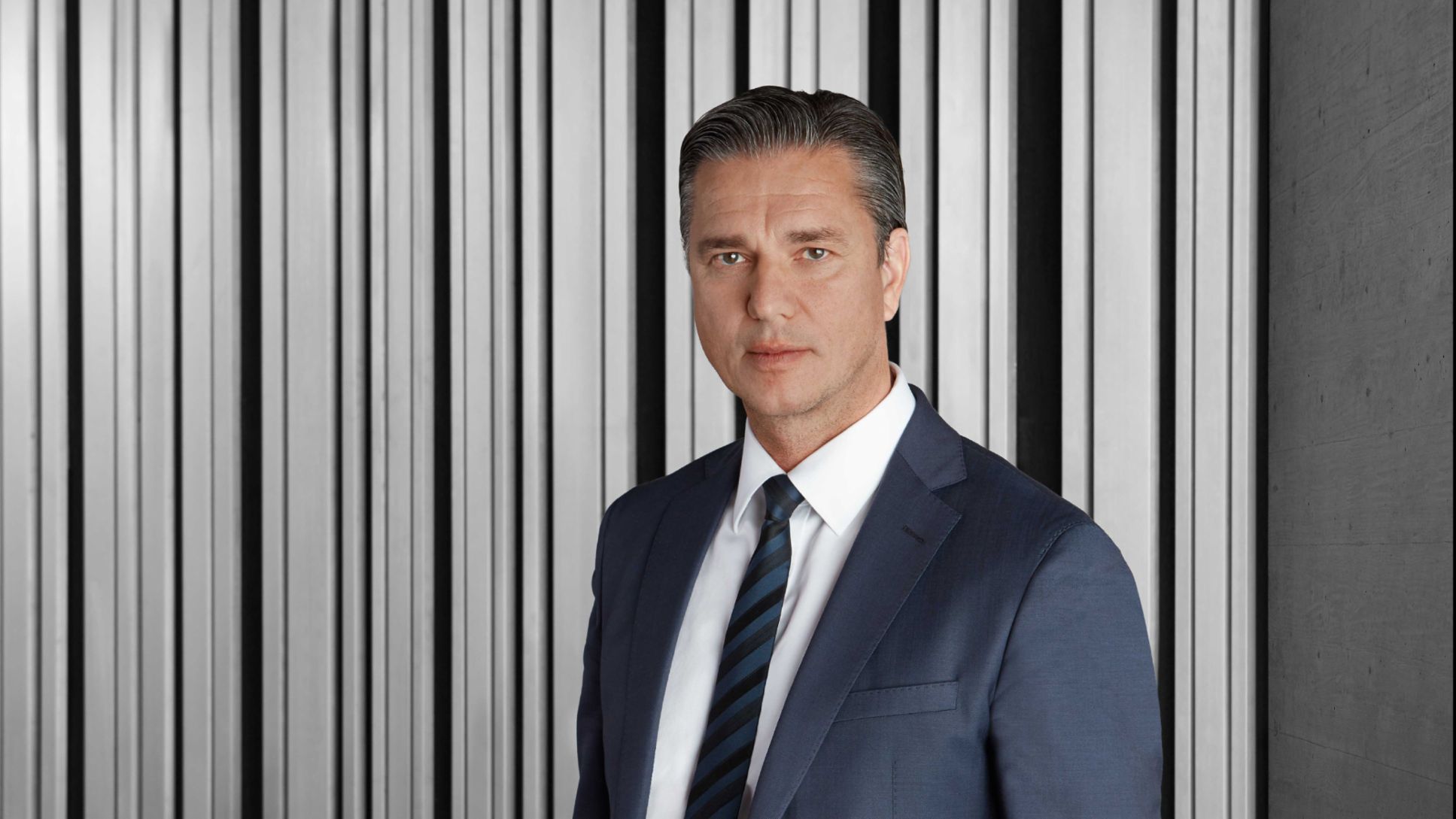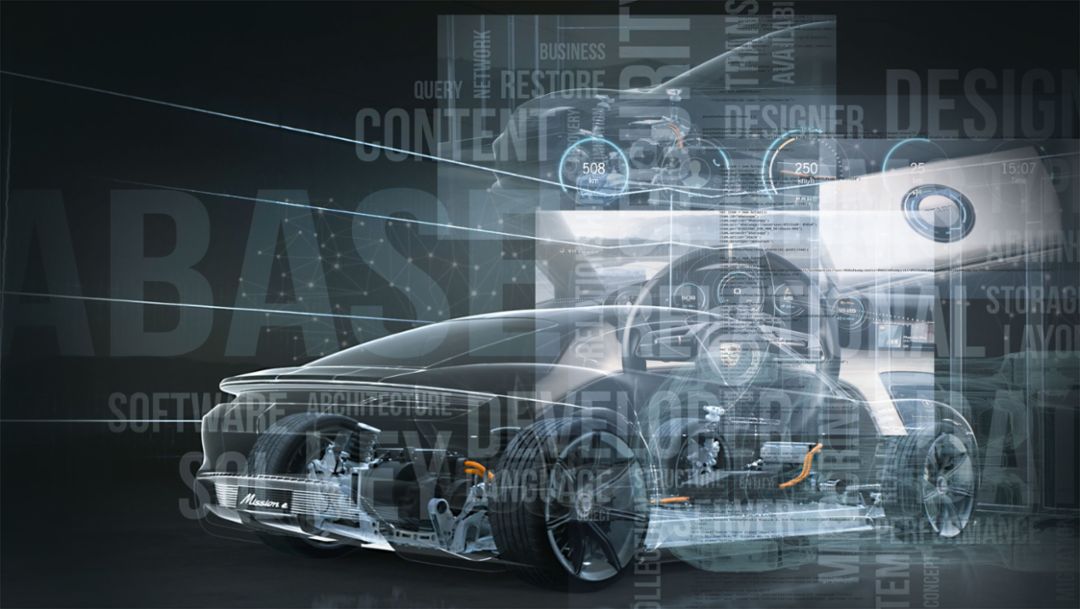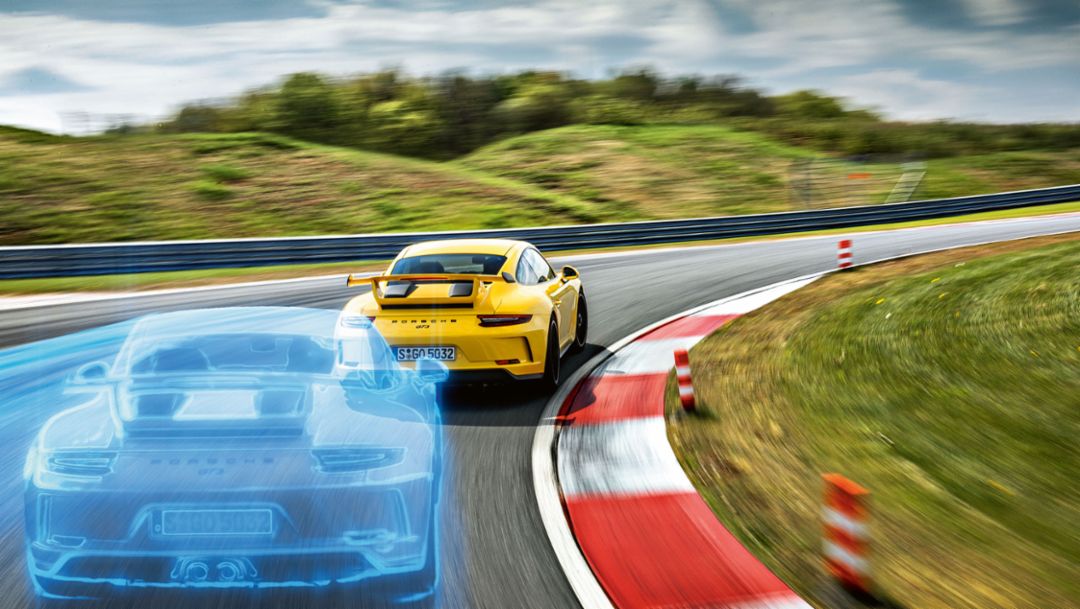Can you imagine a Porsche without a steering wheel?
Meschke: A Porsche will always be a car that you will want and be able to drive yourself. Nevertheless, there are of course aspects of autonomous driving that are interesting for us: Traffic jam assistants or automated parking, for example. It’s attractive to be able to use the drive into the office during rush hour for my first virtual meeting. Or imagine you have dinner plans and are running late – and you can let the car park itself automatically. That’s really useful. In traffic jams and when it comes to parking, the functions of automated driving will soon be “must haves”.
Which functions will Porsche be offering beyond parking and traffic jam assistance?
There are different stages on the way to fully autonomous driving. Depending on the series, we will offer more or fewer functions. Regarding topics such as autonomous driving or connectivity, we have to present solutions that fit perfectly to our customers’ requirements.
When are you planning to roll out such topics?
In the new generations of the Panamera and the Cayenne, we have already consistently taken the next steps in the area of assistance systems. InnoDrive is an example of how we applicate the technical possibilities in the typical Porsche way. That is a step towards semi-autonomous driving. In order to get an overview of the traffic, the system essentially uses the radar sensors and the lane departure assistant for the lateral and longitudinal guidance in combination with highly precise 3D route data from the navigational system. A traffic assistance and parking assistance plus will be included in the Cayenne next year – with a certain delay depending on the market, of course. We will make a real leap with the Mission E at the end of the decade. The principle is this: There are hundreds of thousands of things that you can do with technology. For us, it is important to narrow down the options to the key areas for Porsche and concentrate on these.
Which solutions are relevant for a brand like Porsche?
We will increasingly offer functions “on demand”. That means that the costumer can buy new functions at any time if needed – including long after buying the car and, where applicable, only temporarily. Be it as a one-off for a fee, as a flat rate or as a subscription.
Which functions do you offer on demand?
For example, it would be possible to combine modules from the area of autonomous driving individually. Imagine that you could use a software update to download a few more PS over-the-air at short notice if you want to head to the racetrack on the weekend – or dynamic headlights if you are headed for a long night drive.
What are the effects on the return of investment?
We now have to invest heavily in development. These new services won’t just fall from the sky. Up to now, we have mostly invested in conventional vehicle development, now we are significantly strengthening the development of services. But what is also true is that we want to and we must make money with these new services. In order to do so, we predominantly need concepts for resource-pour growth in which we don’t always have to own all resources ourselves.
But that won’t be enough, right?
No, another idea is the Mark-Webber-function, as we call it – named after the race driver and our brand ambassador. With this function, the vehicle could drive autonomously on a racetrack like the Nürnburgring – just like Webber would drive. The car drives an ideal course and demonstrates perfect brakes in the curves, where to best shift and where to accelerate. First, software saves the exact course Mark Webber drives on a racetrack. These data are used by the autonomous vehicle to drive the course identically. Afterwards the costumer can reclaim the steering wheel and let the car show him the ideal course, thus training and improving his skills as a driver via direct feedback from the car. This is technically possible already. Of course, the driver can improve over time and learn new things. In a first step, he lets the virtual Mark Webber drive and gets to know the course. Then he drives himself and learns from the virtual coach. First, he drives with 40% of the speed, then with 50, then with 60. And of course, you can choose from different race tracks. Or from different race drivers – maybe you would rather drive like Walter Röhrl.
Doesn’t that contradict the DNA of Porsche?
No, on the contrary. We see digitalisation and autonomous driving not as a threat but as a tremendous opportunity. Autonomous driving and Porsche go together very well – we interpret it in a way that is typical of Porsche and combine what it means to be Porsche with the opportunities offered by new technologies.
Are your customers ready to spend money for such products?
Certainly. First of all, a lot of our customers like to go to the racetrack on the weekend. Second of all, using such a special app can cost a four-digit amount. In addition, you might book additional insurance for your weekend on the racetrack via our online-platform, which – by the way – already exists.
How are we to picture that?
Since the beginning of September, we have been offering our customers in Germany situationally bookable additional insurance online. We call this “Porsche Shield”. A pure digital product that isn’t directly connected with the vehicle but that has added value for our customers. Porsche costumers are certainly willing to pay money for such services.
Is your traditional business model no longer sufficient to sustain profitability?
Driving yourself will hopefully remain the most important thing at Porsche for a very long time. The Porsche sports car will be one of the last automobiles with a steering wheel. But autonomous driving will dramatically change the efficiency of using vehicles. We therefore have to assume that we will have to create potential for growth alongside the vehicle in the era of autonomous driving. That’s why it is our medium term goal to generate a two-digit percentage of our business with digital services.
Consumption data
911 GT3: Fuel consumption combined 12.9 – 12.7 l/100 km; CO2 emissions 290 – 288 g/km


